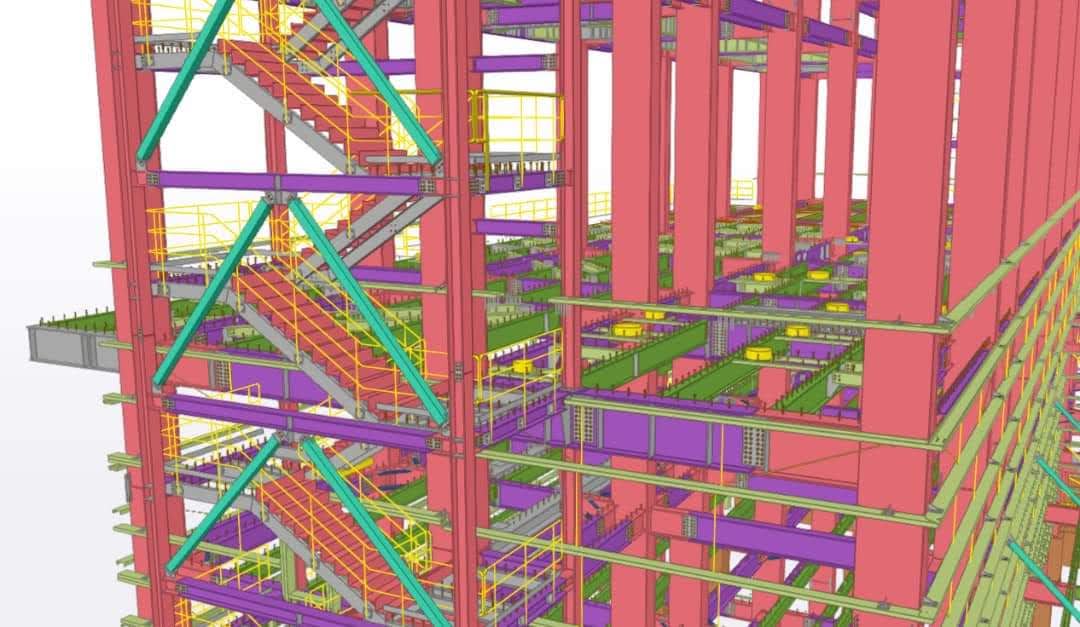Embark on a captivating journey into the fascinating realm of steel structures. This comprehensive guide will take you through every step, from introduction to design, fabrication, and construction. Delve into the intricate world of steel and uncover its limitless possibilities for architectural marvels. Whether you’re a seasoned professional or an aspiring enthusiast, this resource will equip you with valuable insights and knowledge to excel in the realm of steel structures.
Steel structures are widely used in various industries and applications due to their strength, durability, and versatility. From commercial buildings and industrial facilities to bridges and infrastructure projects, steel structures offer numerous advantages in terms of design, fabrication, and construction. Steel structures have indeed become indispensable in various industries and applications, thanks to their exceptional strength, durability, and versatility. Whether it’s for commercial buildings, industrial facilities, bridges, or infrastructure projects, steel structures offer significant advantages that make them the preferred choice.
One of the key benefits of steel structures lies in their design flexibility. The inherent strength of steel allows architects and engineers to create innovative and complex designs that are not easily achievable with other materials. This opens up a world of possibilities when it comes to creating aesthetically pleasing structures that can stand the test of time. Moreover, steel structures are highly durable and resistant to harsh environmental conditions such as extreme temperatures, earthquakes, and hurricanes. This makes them ideal for industries where safety is paramount or where structures need to withstand challenging operational conditions. Another advantage of using steel in construction is its excellent load-bearing capacity. Steel has one of the highest strength-to-weight ratios among construction materials. This means that a smaller amount of steel can support larger loads compared to other materials like wood or concrete. As a result, steel structures require fewer materials overall while still maintaining their structural integrity. Additionally, the versatility offered by steel makes it easier to modify or expand existing structures without compromising their stability.
This adaptability ensures that businesses can easily accommodate changing needs or future expansions without major disruptions or costly renovations. In terms of fabrication and construction processes, steel offers several advantages as well. Steel components can be prefabricated off-site using advanced manufacturing techniques before being transported for assembly on-site. This results in faster construction timelines and reduced labor costs. Furthermore, due to its recyclability nature, using steel minimizes waste generation during both fabrication and demolition phases—making it an environmentally friendly choice for sustainable building practices. Overall, whether you’re looking for a strong foundation for your commercial building or a reliable structure for your infrastructure project – choosing a steel structure will provide you with unmatched strength, durability, and versatility necessary for success.
Discover the comprehensive guide to steel structure introduction, which delves into the intricate details of designing, fabricating, and constructing steel structures. This informative resource not only outlines the step-by-step process, but also highlights crucial precautions to ensure a seamless and successful project. Whether you’re a seasoned professional or new to the field, this indispensable reference will equip you with valuable insights and knowledge for creating robust and durable steel structures.
Design: The design of the steel structure is absolutely vital to the success of any project. Designers rely on advanced calculation software that enables them to accurately analyze and assess the entire structure. Their expertise ensures that the structure is not only safe and reliable, but also cost-effective, meeting all necessary building requirements and functions.
Fabrication: Steel structure fabrication plays a vital role in transforming design plans into essential components. With the use of specialized equipment for cutting and welding, each piece is meticulously crafted to meet the exact design requirements. This attention to detail ensures the utmost precision and quality in every component of the steel structure.
Construction: When it comes to steel structure construction, it is crucial to prioritize site safety and construction quality. This process involves expertly assembling steel components in accordance with the designated construction sequence. By taking these factors into consideration, you can ensure a safe and high-quality building project.
Introduction:
Steel structures are composed of steel members, such as beams, columns, and trusses, that are connected together to form a rigid framework. They provide a robust and cost-effective solution for creating large open spaces, supporting heavy loads, and withstanding harsh environmental conditions.
Design:
The design of a steel structure involves determining the appropriate size and arrangement of steel members to ensure structural stability and meet project requirements. This includes analyzing loads, such as dead loads, live loads, wind loads, and seismic loads, to determine the required strength and stiffness of the structure. Advanced computer-aided design (CAD) software and structural analysis tools are used to create detailed 3D models, perform simulations, and optimize the design for efficiency and safety.
Fabrication:
Once the design is finalized, the fabrication process begins. Steel fabrication involves cutting, shaping, and assembling steel members according to the design specifications. Advanced technologies, such as computer numerical control (CNC) machines, are used to ensure accuracy and precision in cutting and drilling steel members. Welding, bolting, or a combination of both methods are used to connect the steel members to form the desired structure. Quality control measures are implemented throughout the fabrication process to ensure that the final product meets the required standards and specifications.
Construction:
The construction of a steel structure involves the assembly and erection of fabricated steel members at the construction site. Prior to the erection process, site preparation, including foundation construction, is carried out to create a stable base for the structure. The steel members are then lifted into position using cranes and secured together using bolts or welds. Safety precautions and proper sequencing of erection steps are essential to ensure a smooth and efficient construction process. During construction, inspections and quality checks are conducted to verify the integrity and adherence to design specifications.
Steel structures play a vital role in modern engineering projects as they provide essential components made from section steel or steel plate. The use of welding or bolt connection methods ensures that these structures meet specific requirements. These load-bearing structures, following established guidelines, are referred to as steel structures. From steel bridges and workshops to large pipeline containers and high-rise buildings, they find immense applications in various construction projects, including public buildings and gates. With their versatility and durability, steel structures have become indispensable in the field of engineering.
Application of steel structure:
When it comes to constructing buildings, steel structures have proven to be a reliable and versatile choice. From multi-story buildings and factories to warehouses, commercial structures, and even stylish steel villas, the possibilities are endless. Steel offers strength, durability, and design flexibility that can meet the needs of any project. Whether you’re looking for a practical industrial space or a modern living space, steel structures have got you covered.
Immerse yourself in the vast possibilities of offshore drilling with our meticulously designed steel structure platform. Crafted with robust materials and engineered for unmatched durability, our platform offers a reliable foundation for your drilling operations. Count on its resilience to withstand even the harshest conditions while maximizing productivity. Experience efficiency and peace of mind knowing that your offshore drilling activities are backed by a top-notch steel structure that exceeds industry standards.
The utilization of steel structures in diverse large equipment is a smart choice for several reasons. The durability and strength that steel offers make it the perfect material for ensuring the safety and reliability of these machines. The versatility of steel structures also allows for innovative designs, enabling manufacturers to create efficient and optimized equipment. With its superior resistance to corrosion and extreme weather conditions, steel ensures that these structures can withstand the test of time, providing long-lasting performance.
Steel structure bridge
Transform the way you think about steel structures with our innovative space grid designs. Our solutions include grid structures, suspension cable structures, shell structures, pipe truss structures, membrane structures, and more. Experience the strength and versatility of our cutting-edge technology in constructing durable and visually appealing architectural wonders.
Benefits of Steel Structures:
Steel structures offer several advantages, including:
-
Strength and Durability: Steel is a strong and resilient material, capable of withstanding heavy loads and extreme weather conditions.
-
Design Flexibility: Steel structures can be easily modified and adapted to accommodate changing needs and future expansions.
-
Speed of Construction: Compared to other construction materials, steel structures can be fabricated and erected quickly, reducing overall construction time.
-
Cost-Effective: Steel structures are often more cost-effective than other building materials, considering their durability, low maintenance requirements, and long lifespan.
-
Sustainability: Steel is a recyclable material, making steel structures an environmentally-friendly choice. Additionally, the lightweight nature of steel reduces the environmental impact during transportation and construction.

